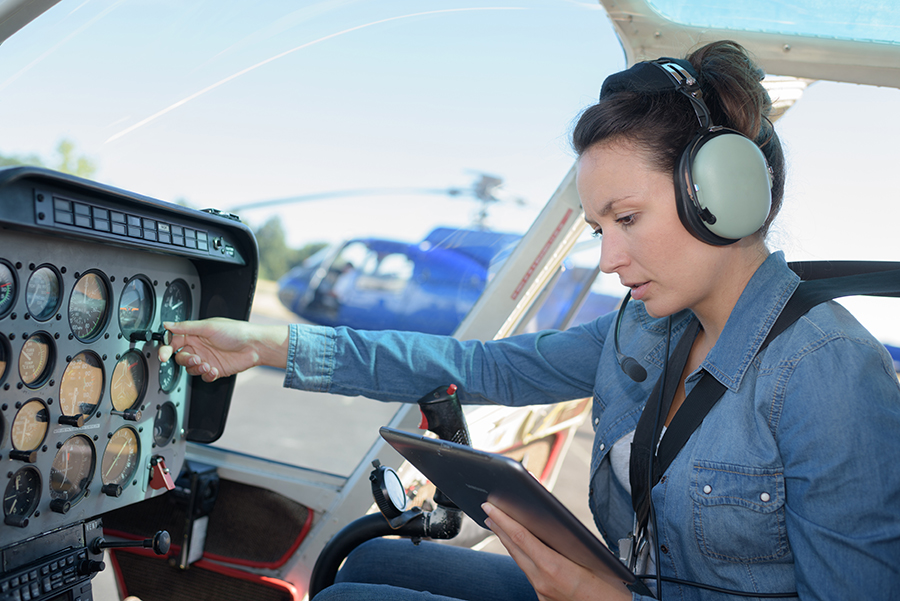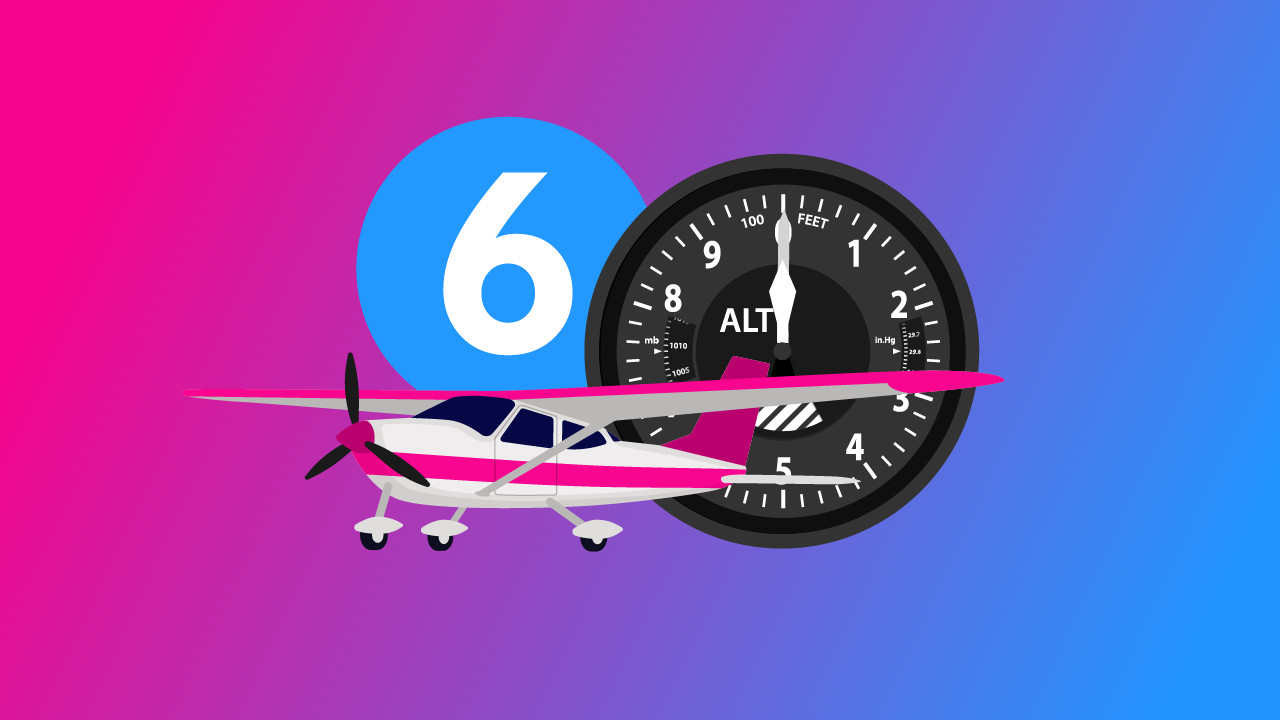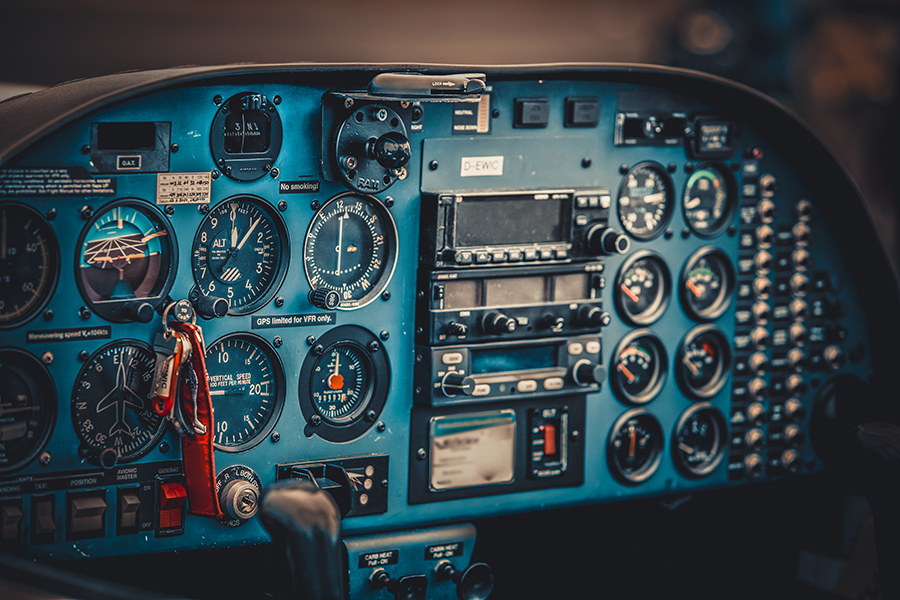Are you preparing to become a pilot? If so, you know that becoming a pilot requires a significant investment in time, energy, and resources.
You want to, therefore, give yourself every advantage to succeed in your flight training and eventually become a competent pilot.
That’s why we’ve compiled the best books for student pilots written by experienced pilots and aviation professionals with a wealth of knowledge.
By reading these books, you can absorb their decades of experience and develop the skills and knowledge you need to excel in your flight training and stand out from your peers.
Applying what you learn from these books will give you the edge you need to succeed in your flight training and achieve your dream of becoming a pilot.
Here’s a quick summary:
- Best practical book: Airplane Flying Handbook (FAA-H-8083-3C)
- Best for exam preparation: Private Pilot Oral Exam Guide
- Best for aviation knowledge: Pilot’s Handbook of Aeronautical Knowledge (FAA-H-8083-25B)
- Best for meteorology: Aviation Weather Handbook FAA-H-8083-28
- Best for decision-making: The Killing Zone, Second Edition
Best Pilot Books (2023)
1. Pilot’s Handbook of Aeronautical Knowledge (FAA-H-8083-25B)
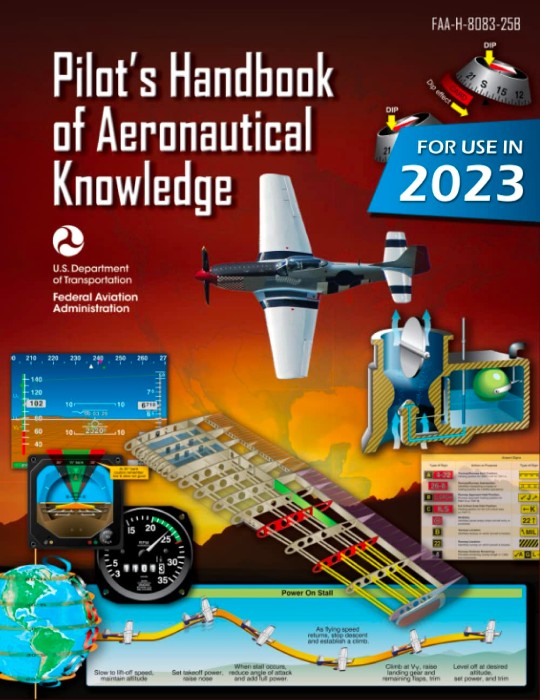
PROS
- Comprehensive guide to the principles and practices of aviation
- Published by the Federal Aviation Administration (FAA), a reputable and reliable source
- A clear and concise writing style makes it easy to understand and absorb the material
- Well-organized, with chapters covering a wide range of topics
- Numerous illustrations, charts, and diagrams help clarify complex concepts
- Available for free on the FAA’s website
CONS
- Some students may prefer a physical copy of the handbook, which is not available for free
- The handbook may not cover more advanced or specialized topics in as much detail as other resources
- Some students may find the handbook too dense or technical and may prefer a more casual or conversational writing style
The Pilot’s Handbook of Aeronautical Knowledge is a comprehensive guide to the principles and practices of aviation. This handbook is published by the Federal Aviation Administration (FAA) and is an essential resource for student pilots preparing for their private pilot certification.
One of the standout features of this handbook is its clear and concise writing style, which makes it easy for students to understand and absorb the material. The handbook is also well-organized, with chapters covering various topics such as airspace, aircraft performance, navigation, and weather. In addition, the handbook includes numerous illustrations, charts, and diagrams to help clarify complex concepts and make them easier to visualize.
One of the best parts about the Pilot’s Handbook of Aeronautical Knowledge is that it is available for free on the FAA’s website. That’s right; you can download a digital copy (in PDF form) of this invaluable resource at no cost. This is great for student pilots, who often have to budget carefully for their flight training expenses.
Overall, the Pilot’s Handbook of Aeronautical Knowledge is a must-have resource for any pilot. Whether you are just starting out in your flight training or are preparing for your private pilot exam, this handbook will provide you with the knowledge and skills you need to succeed. From understanding airspace and aircraft performance to navigating and dealing with adverse weather conditions, this handbook covers it all.
2. Airplane Flying Handbook (FAA-H-8083-3C)
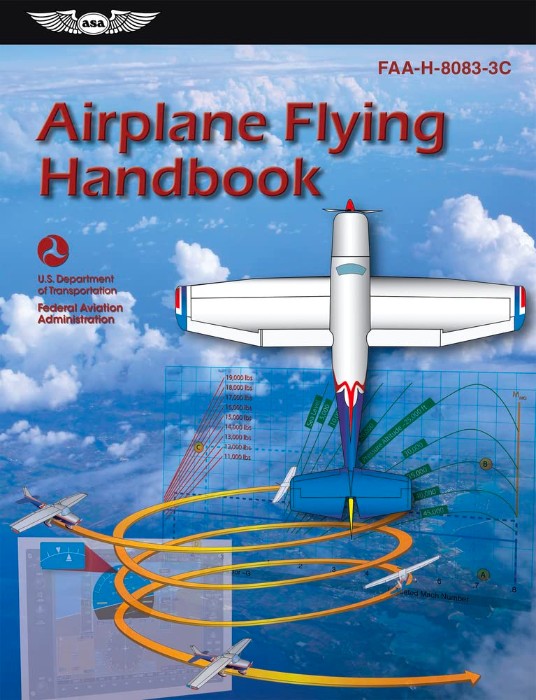
PROS
- Free to download in PDF form
- Written in an easy-to-understand style, making it accessible to pilots of all experience levels
- Regularly updated to reflect the latest best practices and guidelines in the aviation industry
- Endorsed by the FAA, pilots can be confident that the information in the handbook is accurate and reliable
CONS
- Lengthy, and some pilots may find it overwhelming to read through
- Some pilots may find the handbook dry or dull to read, as it is primarily a reference guide rather than a narrative-style book
- Mainly focuses on flying techniques and procedures and may not cover other important aspects of aviation, such as weather or Air Traffic Control
The FAA’s Airplane Flying Handbook (FAA-H-8083-3C) comfortably takes the second spot on our list. It covers many practical topics related to flying an airplane, including takeoff and landing procedures, navigation, communication, and emergency procedures.
And, of course, it is free to download in PDF form on the FAA’s website.
The handbook is written in an easy-to-understand style and is regularly updated to reflect the latest best practices and guidelines in the aviation industry. It is endorsed by the FAA, so pilots can be confident that the information contained in the handbook is accurate and reliable.
However, the handbook is quite lengthy, and some pilots may find it overwhelming to read through in its entirety. It is also primarily a reference guide and may not be as engaging to read as a narrative-style book.
Additionally, while the handbook covers many important aspects of flying, it does not go into detail on radio telephony (e.g., Air Traffic Control) and weather (we’ve got you covered with other books on the list).
Overall, the FAA’s Airplane Flying Handbook is a valuable resource for pilots. It provides a wealth of knowledge and guidance on flying techniques and procedures and is a valuable reference guide for pilots of all experience levels.
3. Private Pilot Oral Exam Guide
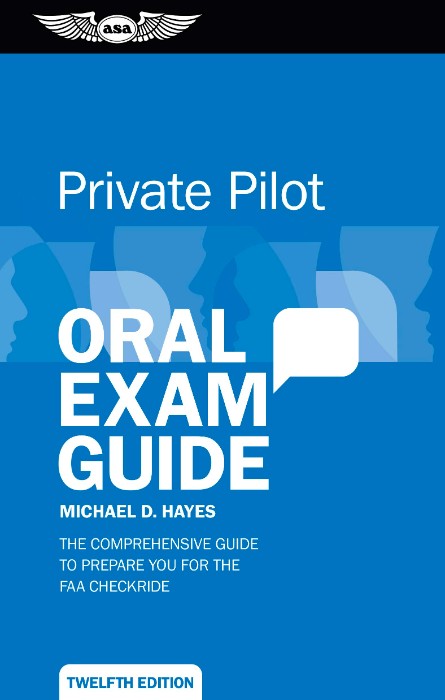
PROS
- High quality
- Practical
- Affordable
CONS
- Limited explanation of concepts
The Private Pilot Oral Exam Guide is a comprehensive resource designed to help student pilots prepare for their FAA check ride. This guide covers all of the material that a student pilot can expect to be tested on during the oral exam portion of the checkride, including aircraft systems, flight planning, weather, and regulations.
One of the standout features of this guide is the thoroughness of its coverage. It covers all of the key topics, providing a solid foundation of knowledge that will be essential for success on the oral exam. The guide is also well-organized, with real questions and answers that make it easy to find the information you need.
You will have to use other resources in conjunction with the Private Pilot Oral Exam Guide, however, as the exam guide is not intended to explain concepts in depth.
Overall, the Private Pilot Oral Exam Guide is a valuable resource for any student pilot preparing for the FAA check ride. Its comprehensive coverage and clear presentation of material make it an essential tool for success on the oral exam.
4. Aviation Weather Handbook FAA-H-8083-28
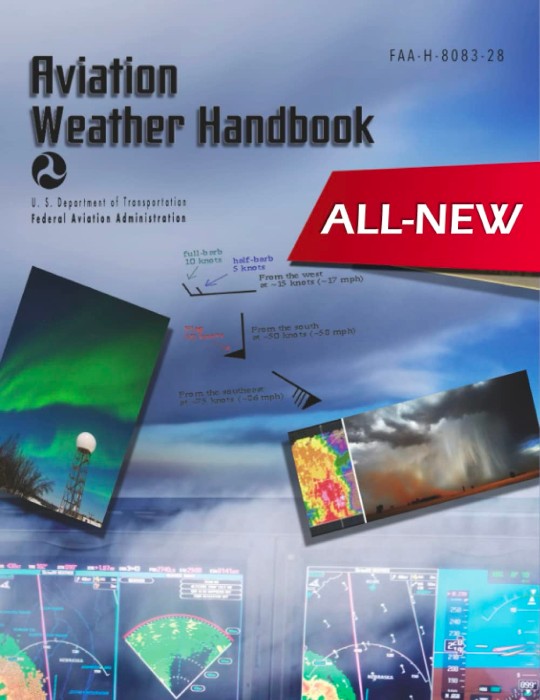
PROS
- Comprehensive coverage of weather-related topics
- Clear and concise presentation of material
- Numerous illustrations and diagrams to clarify complex concepts
- Includes numerous examples and case studies
- Available for free
CONS
- Despite being merely a reference guide, some pilots may find the handbook monotonous or uninviting to read due to its lack of narrative style
The Aviation Weather Handbook, FAA-H-8083-28, is a comprehensive resource that was recently released in December 2022. This handbook is designed specifically for student pilots to help them understand and interpret weather information.
One of the standout features of this handbook is its extensive coverage of weather-related topics. With over 500 pages of information, the Aviation Weather Handbook covers a wide range of concepts and principles, including meteorology, weather observation, forecasting, and the impact of weather on flight. The handbook is also well-organized, with clear headings and subheadings that make it easy to find the information you need.
In addition to being a comprehensive resource on aviation weather, the Aviation Weather Handbook also excels when it comes to accessibility. It is organized in a way that makes complex topics easy to understand, with clear explanations and helpful visuals such as diagrams and illustrations. Additionally, the handbook includes numerous examples and case studies to help students understand how weather principles apply in real-world situations.
One of the significant advantages of the Aviation Weather Handbook, FAA-H-8083-28, is that it is available for free, just like many other FAA publications. This means that student pilots can access all of the valuable information and insights in the handbook at no cost on the FAA’s website, making it an even more appealing resource.
The free availability of the Aviation Weather Handbook is just one example of the FAA’s ongoing commitment to providing pilots with the information and resources they need to be successful. By making this handbook and other publications available for free, the FAA can ensure that pilots have access to the most up-to-date and accurate information, helping to promote safety and excellence in aviation.
Overall, the Aviation Weather Handbook is a valuable resource for any student pilot looking to improve their understanding of weather and its impact on flight.
5. The Killing Zone, Second Edition
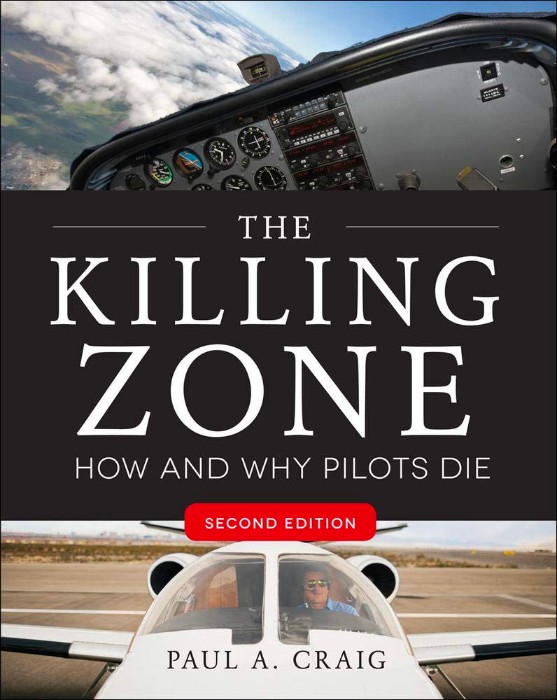
PROS
- Focuses on the psychological and emotional challenges faced by student pilots, which are often overlooked in traditional training programs
- Includes case studies and examples to help illustrate key concepts
CONS
- May not help with technical or theoretical concepts during flight training
The Killing Zone is a book written by Dr. Paul Craig, a professor, and experienced flight instructor. The book is designed to help student pilots understand and navigate the “killing zone,” a term used to describe the critical stages of a pilot’s training and development where the risk of accidents and mistakes is highest.
The book begins by discussing the factors that contribute to the killing zone, including the pressure to succeed, lack of experience, and the challenges of adapting to new environments and technologies. It then goes on to provide practical advice and strategies for navigating this challenging period, including tips for managing stress, developing good habits, and seeking help when needed.
One of the key strengths of The Killing Zone is its focus on the psychological and emotional challenges that student pilots face. The author does an excellent job of explaining how these challenges can impact performance and decision-making and provides valuable insight into how pilots can overcome them. The book also includes several case studies and examples that help illustrate the concepts discussed.
The second edition of The Killing Zone includes several new sections that address critical developments in the field of pilot training.
The first new section deals with the use of glass cockpits, GPS moving maps, and collision avoidance systems. It includes a new chapter on the concept of available safety versus actual safety. This section is designed to help pilots understand and effectively use these technologies to improve safety and performance.
The second new section of the book alerts pilots to the 12 mistakes that are most likely to lead to accidents or fatalities. This section provides a valuable resource for pilots looking to identify and avoid common pitfalls and is expected to be particularly interesting to student pilots.
The third new section of the book provides guidelines for avoiding, evading, diverting, correcting, and managing dangers. This section is designed to help pilots develop the skills and strategies necessary to handle unexpected challenges and emergencies and is likely to be of value to pilots at all levels of experience.
Finally, the second edition of The Killing Zone includes a “Pilot Personality Self-Assessment Exercise” designed to help pilots identify their strengths and weaknesses and develop an individualized survival strategy based on their unique characteristics. This section will likely be valuable to pilots looking to identify and overcome personal challenges that may impact their performance and safety.
Overall, The Killing Zone is a valuable resource for student pilots looking to succeed in their training and avoid common pitfalls. It provides a wealth of advice and strategies and is highly recommended for any student pilot looking to take their skills to the next level and become a safer pilot.
Conclusion
Overall, the books discussed in this article provide an invaluable resource for student pilots looking to become successful and safe pilots.
From learning about weather principles with the Aviation Weather Handbook to understanding the psychological challenges of flight with The Killing Zone, each book offers valuable insight into what it takes to succeed as a pilot.
Their comprehensive coverage and up-to-date information can help ensure that you pass your tests and place you on track toward becoming a top-notch aviator!
